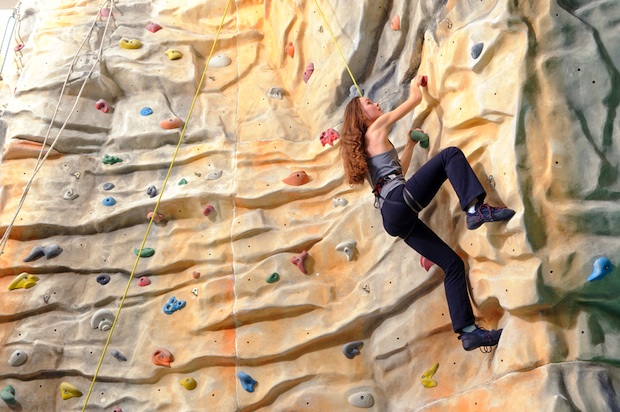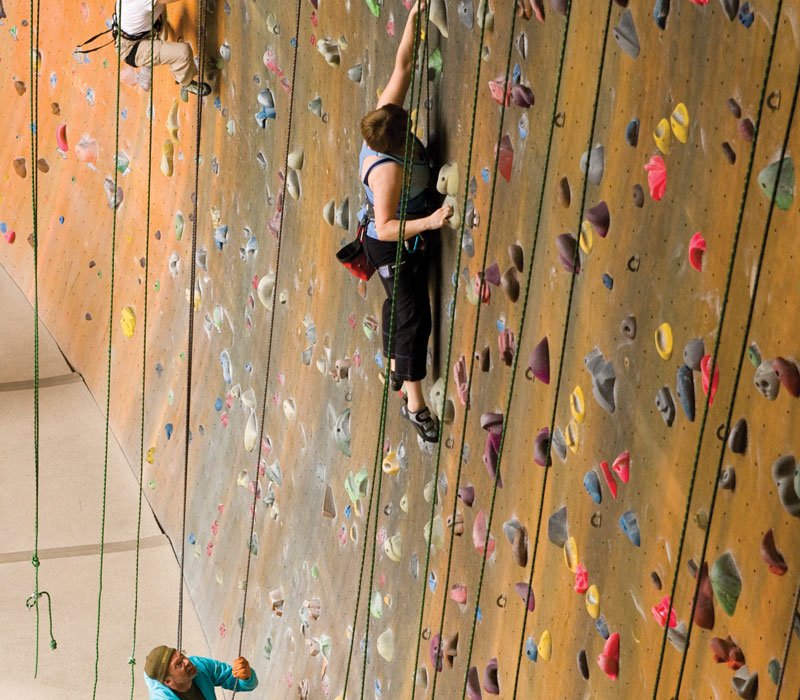Indoor Bouldering: A Level Up For Newbies and A Practice Ground For Experts


Indoor bouldering is a form a rock climbing in which the climber does not use ropes or supports to climb. No equipment is used in such climbing. The bouldering provides a better way to tackle climbing problems. The climbing problems are the steepness or any boulder or rock fragment interfering while climbing. In the indoor bouldering, the climbing problems are generally highlighted in the form of colored plastic protrusions. These protrusions are margined by colored tapes, in which a particular color symbolizes a particular climbing problem. This benefits the young rock climbers which are new to these boulders and also it benefits the experts of rock climbing.
After the usual rock climbing, bouldering is the next challenge for the climbers. As the benefits already gained by them while rock climbing makes them liable to the next step, their muscles meanwhile gets more toned, endured and strengthened through bouldering. The levels of climbing are further enhanced when the climbers which are new to bouldering further experiences and learns the tactics and the tricks of climbing boulders and rocks outdoor.

While indoor bouldering, the climber uses no support in climbing whatsoever. In some cases only the ‘climbing shoes’ are worn so that they are able to withhold the grip on the plastic holders mounted on the boulders. This particular arduous task enhances the ability of the climbers (experts and new alike) to rely on their physical situation more than the supports which hold them. In case if they are bouldering outdoors, this gained ability comes into play over there.
Outdoor rock climbing has its own challenges; it is not just a head-on climbing, it requires technique and usage of the muscle coordination and control. Bouldering indoor is a safer way of gaining experience for the outer world. The climbing difficulties experienced in indoor bouldering are actually artificially man-made which stays in striking resemblance with the outdoor difficulties. This is useful for both the experts and the newbies. The newbies get a newer version of rock climbing and they experience a higher level of challenge. While the experts get more familiar with the climbing difficulties by hitting on the similar and different hurdles on the course of climbing.

Strength and endurance are the key areas which are further improved in bouldering. The hand grips and the long reaching are strengthened. Also, offering much resentment to the climbers, the boulders are far more difficult to be climbed. This increased level of difficulty thus increases the endurance and strength of the muscles to bear the stress. While climbing, the key groups of muscles, especially those of the back muscles, the fore arms, the neck muscles, the thigh muscles, the biceps and the triceps are more toned to meet the difficulty level of the boulder climbing.
Climbing either a boulder or a rock can be much more different than perceived. The boulder climbing introduces the newbies to the challenges nature has to offer outside the gym. In a safer environment they get the gist of what they would be experiencing outside. At the same time, the experts, although knowing the true nature of climbing can practice more and more on what they have been failing at.
